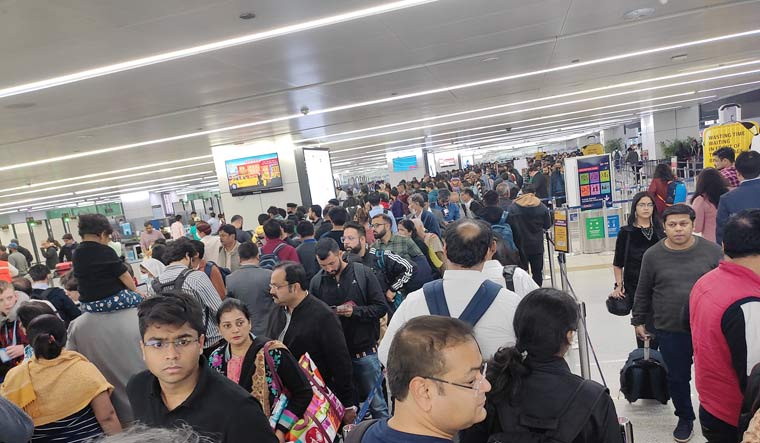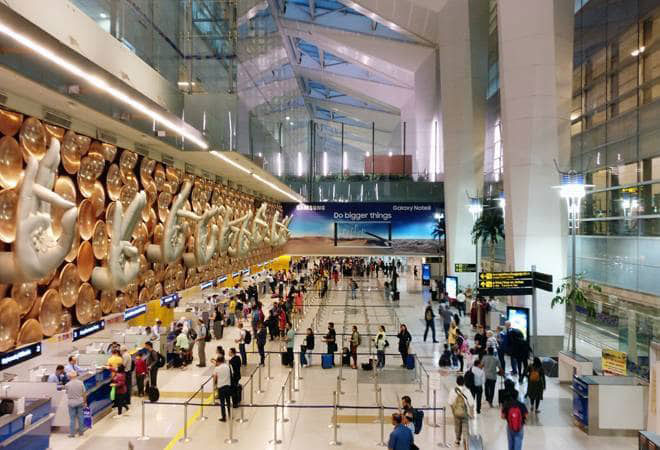Jyotiraditya Scindia, the Union Minister for Civil Aviation, paid a visit to Terminal 3 (T3) of the Indira Gandhi International Airport in Delhi on Monday, December 12, as several travellers had been complaining about long lines for security checks, boarding delays, and a lack of efficient management.

After his visit, Scindia said that, “The actions points that we have determined, together as a collective today, maybe, we’ll see a resolving of this in the next 10 days.”
Here’s a look at what’s going on at the Delhi airport, what’s being done to repair it, and why you should adjust your travel plans as the busy travel season gets underway.
Currently, social media is inundated with videos and images posted by travellers documenting the mayhem at the airport. One traveller reported having trouble entering the airport, and another claimed that some of the security check’s equipment was broken and slowed down traffic.
A few travellers also said on Twitter that the delays caused them to miss flights and that they had to purchase new tickets at the last minute.
Officials at the airport claim that this is because there are fewer counters, a smaller amount of space, more passengers, and fewer security personnel. After two consecutive years of Covid resulted in a slowdown in overall tourism, some of the congestion may also be related to the rise in travellers at the end of the year.
We have moved from the Covid era of zero passengers to actually surpassing the pre-Covid figures, according to Scindia. Travel has increased in India since the third wave of Covid earlier this year, when hospitalisation rates were noticeably lower. For instance, the number of visitors visiting Himachal Pradesh in November of this year was three times higher than it was in November of last year.
The Delhi International Airport Limited (DIAL) stated that it is making plans to deploy more systems and personnel in order to meet the demand at T3. We have moved one more X-Ray equipment and added more staff to help direct travellers, especially at congested areas. To further ameliorate the situation, all parties, including Central Industrial Security Force (CISF) and Immigration, will need to handle additional manpower requirements, it was announced on Saturday.
The T3 is the busiest area of the airport, managing more than 500 domestic and 250 international planes, as well as 1.9-1.95 lakh passengers each day. According to DIAL, the number of aircraft has been decreased for decongestion from 22 per hour (pre-Covid) to 19 per hour (November 2022).
Following a meeting on the subject, Scindia tweeted on December 7 that a number of initiatives had been outlined, including planning for peak-hour capacity at major airports, evaluating the capacity of x-ray machines for luggage, and long-term technological advancements for quicker processing of baggage and security.
One bottleneck at the departure was the 16 gates, and the number of gates has since been expanded. In order to encourage travellers to shift to less congested places and lighten the stress on the system, the minister added that he requested that waiting times be shown at all ports of entry.
To direct customers toward less crowded entrances, usherers were also going to be introduced. Despite reports of certain difficulties, he continued, the recently introduced facial ID system Digiyatra would be more widely adopted, which would make entrance easier.
The Automatic Tray Retrieval System (ATRS) was also found to be a clogging factor in the security queues.
Source: Indian Express
